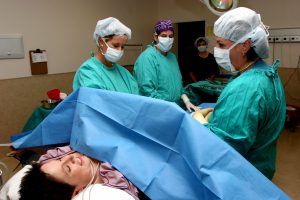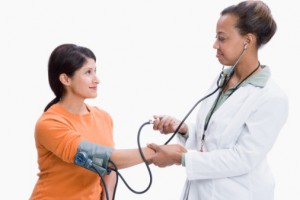 Almost 1 out of every 3 people in the United States will develop shingles. Shingles is the term used for a skin rash that is caused by the herpes-zoster (varicella) virus, the same virus that causes chickenpox. In some cases it can reactivate and cause shingles. Anyone who has had chickenpox may develop shingles, including pregnant women and even children.
Almost 1 out of every 3 people in the United States will develop shingles. Shingles is the term used for a skin rash that is caused by the herpes-zoster (varicella) virus, the same virus that causes chickenpox. In some cases it can reactivate and cause shingles. Anyone who has had chickenpox may develop shingles, including pregnant women and even children.
As a new or expecting mother there are a lot of concerns for staying as healthy as you can for you and your baby during pregnancy. Although you can’t give anybody shingles, you can pass the virus on as chickenpox. Whereas shingles is harmless in pregnancy, chickenpox can cause problems for an unborn baby. For this reason, stay away from other pregnant women while you have shingles.
If you are pregnant or trying to get pregnant:
- First, get a blood test to find out if you’re immune to chickenpox. If you’re not immune, you can get a vaccine. It’s best to wait 1 month after the vaccine before getting pregnant.
- If you’re already pregnant, don’t get the vaccine until after you give birth. In the meantime, avoid contact with anyone who has chickenpox or shingles.
- If you’re not immune to chickenpox and you come into contact with someone who has it, tell your doctor right away. Your doctor can treat you with medicine that has chickenpox antibodies.
- Tell your doctor if you come in contact with a person who has shingles. Your doctor may want to treat you with an antiviral medication. Antiviral medication will shorten the length of time that the symptoms will be present.
There isn’t a cure for shingles but a physician will usually prescribe medications to make the symptoms less intense. If you have questions about shingles send them to AskUs@marchofdimes.org
To learn more about prenatal treatments please call the Department of Obstetrics and Gynecology at Flushing Hospital Medical Center, 718-670-8994.
All content of this newsletter is intended for general information purposes only and is not intended or implied to be a substitute for professional medical advice, diagnosis or treatment. Please consult a medical professional before adopting any of the suggestions on this page. You must never disregard professional medical advice or delay seeking medical treatment based upon any content of this newsletter. PROMPTLY CONSULT YOUR PHYSICIAN OR CALL 911 IF YOU BELIEVE YOU HAVE A MEDICAL EMERGENCY.



